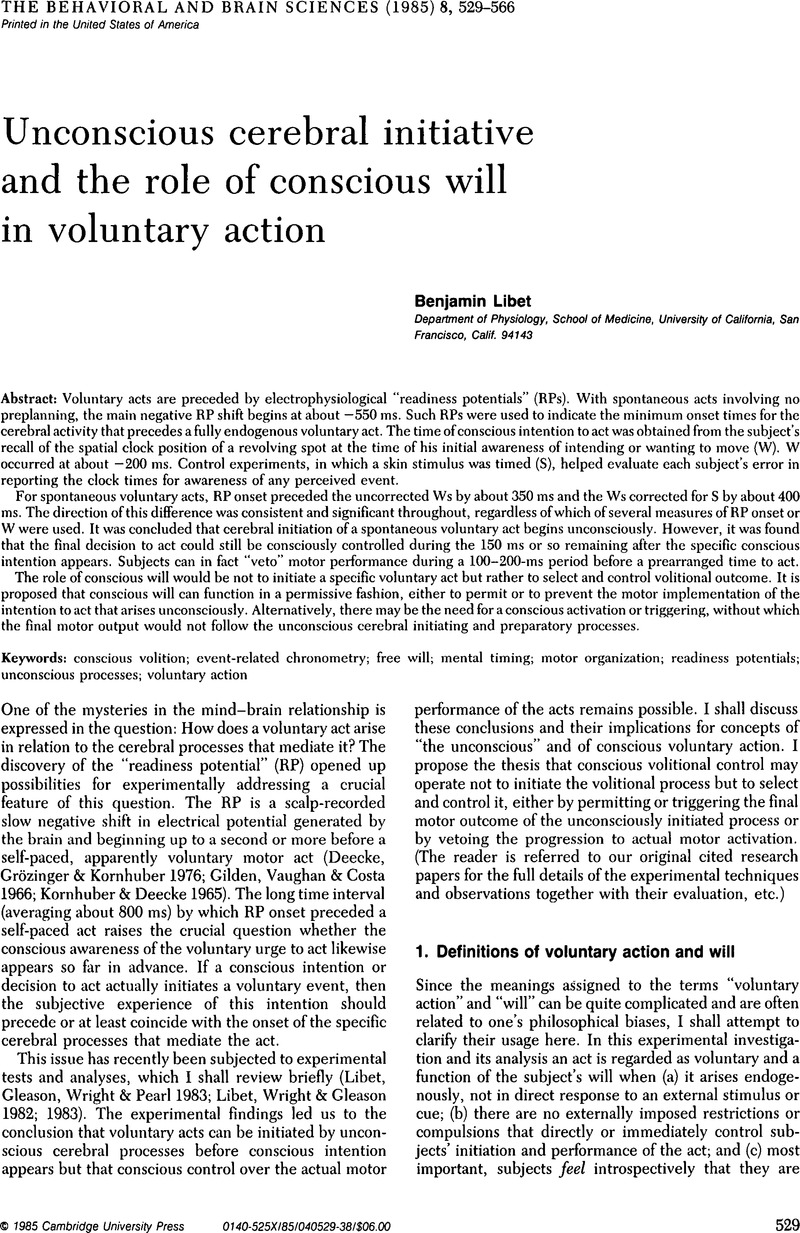Crossref Citations
This article has been cited by the following publications. This list is generated based on data provided by Crossref.
Hammond, Geoff
Thompson, Trevor
and
Campbell, Lyn
1993.
Judgments of moving and intending to move in a timed-response task.
Psychological Research,
Vol. 55,
Issue. 2,
p.
144.
Trevena, Judy Arnel
and
Miller, Jeff
2002.
Cortical Movement Preparation before and after a Conscious Decision to Move.
Consciousness and Cognition,
Vol. 11,
Issue. 2,
p.
162.
Banks, William P.
and
Pockett, Susan
2007.
The Blackwell Companion to Consciousness.
p.
657.
Haynes, John-Dylan
2011.
Characterizing Consciousness: From Cognition to the Clinic?.
p.
161.
Haynes, John‐Dylan
2011.
Decoding and predicting intentions.
Annals of the New York Academy of Sciences,
Vol. 1224,
Issue. 1,
p.
9.
Schultze-Kraft, Matthias
Birman, Daniel
Rusconi, Marco
Allefeld, Carsten
Görgen, Kai
Dähne, Sven
Blankertz, Benjamin
and
Haynes, John-Dylan
2016.
The point of no return in vetoing self-initiated movements.
Proceedings of the National Academy of Sciences,
Vol. 113,
Issue. 4,
p.
1080.
Schultze-Kraft, Matthias
Parés-Pujolràs, Elisabeth
Matić, Karla
Haggard, Patrick
and
Haynes, John-Dylan
2020.
Preparation and execution of voluntary action both contribute to awareness of intention.
Proceedings of the Royal Society B: Biological Sciences,
Vol. 287,
Issue. 1923,
p.
20192928.
Neafsey, Edward J.
2021.
Conscious intention and human action: Review of the rise and fall of the readiness potential and Libet’s clock.
Consciousness and Cognition,
Vol. 94,
Issue. ,
p.
103171.



